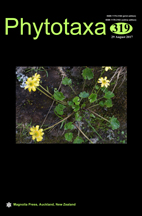Abstract
The species-level taxonomy of the marine brown algal genus Sargassum is problematic. To resolve some of these systematic issues in the northern China seas, a molecular analysis of Sargassum species was carried out using ITS-2, cox3, and rbcL DNA sequences. Phylogenetic analyses confirmed eight species, including: S. confusum, S. fusiforme, S. hemiphyllum var. chinense, S. horneri, S. muticum, S. siliquastrum, S. thunbergii, and S. vachellianum. The previously described S. shandongense and S. qingdaoense, endemic to the Shandong Peninsula, are shown to be synonymous with S. vachellianum. Seven species previously described from the East China Sea were not observed, and require further investigation.

